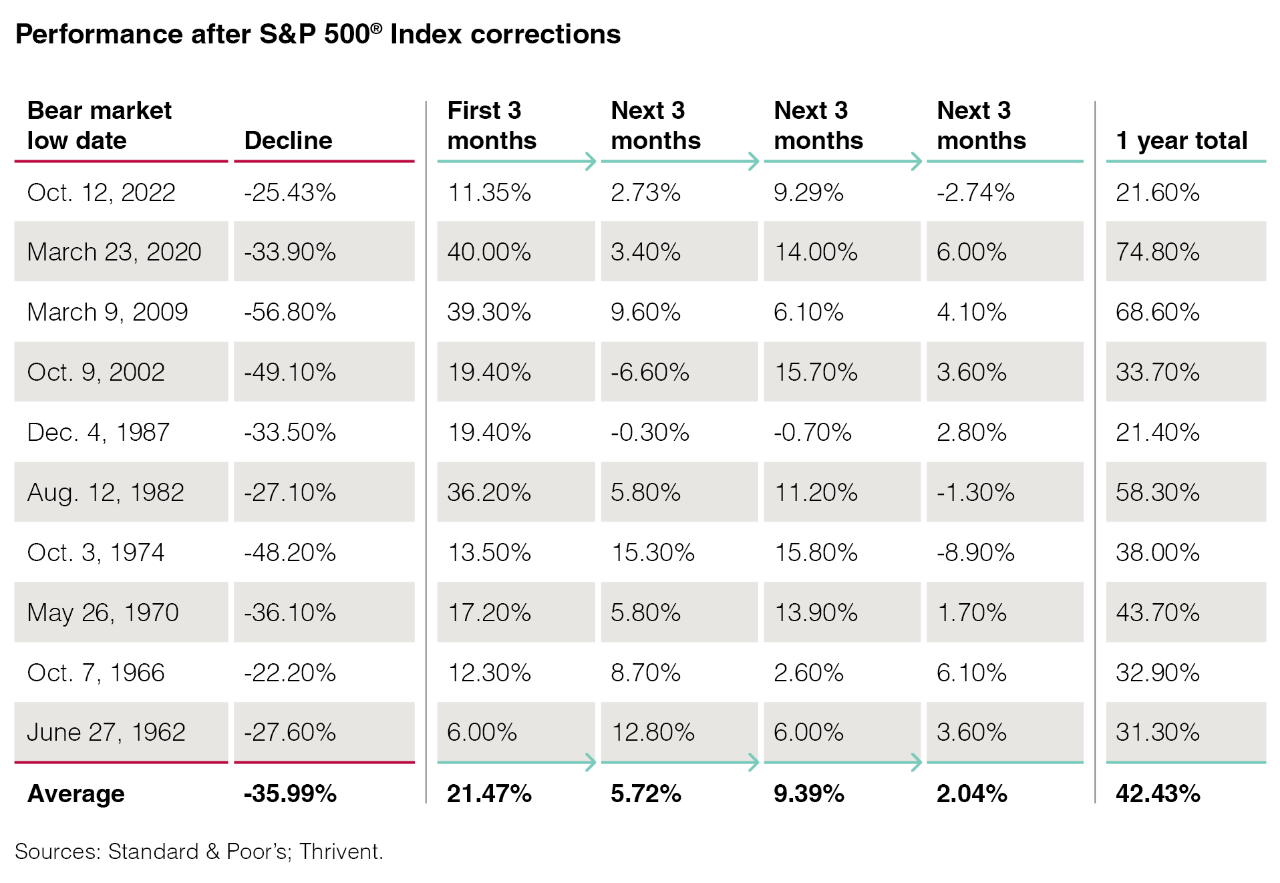While you may be tempted to pull money out of the stock market to avoid corrections and bear markets—like what we saw in 2022—timing the market is notoriously difficult.
Not only do you need to reduce your exposure to equities at just the right time, but you’ll also need to re-enter the market at precisely the right time as well. History has shown that you’ll typically see a sharp rebound in equity markets after periods of decline.
Following the 10 bear markets (declines of 20% or more) since 1962, the first three months after the bottom saw returns bounce back 21.47%, on average, while the first full year climbed, on average, 42.43%, as the table below illustrates:




![October Thrivent market & economic update [VIDEO]](/content/dam/thrivent/mcs/site-media/insights/market-update/october-2025-thrivent-market-economic-update/october-2025-thrivent-market-economic-update-full-video-thumbnail.png/_jcr_content/renditions/cq5dam.web.1280.1280.png)